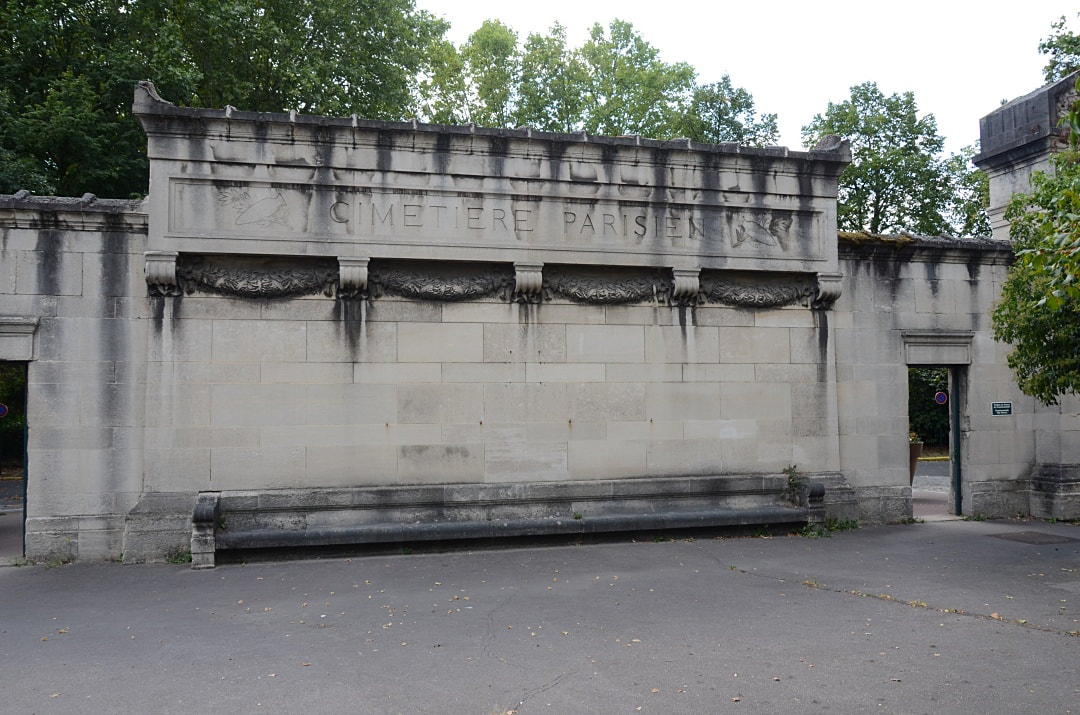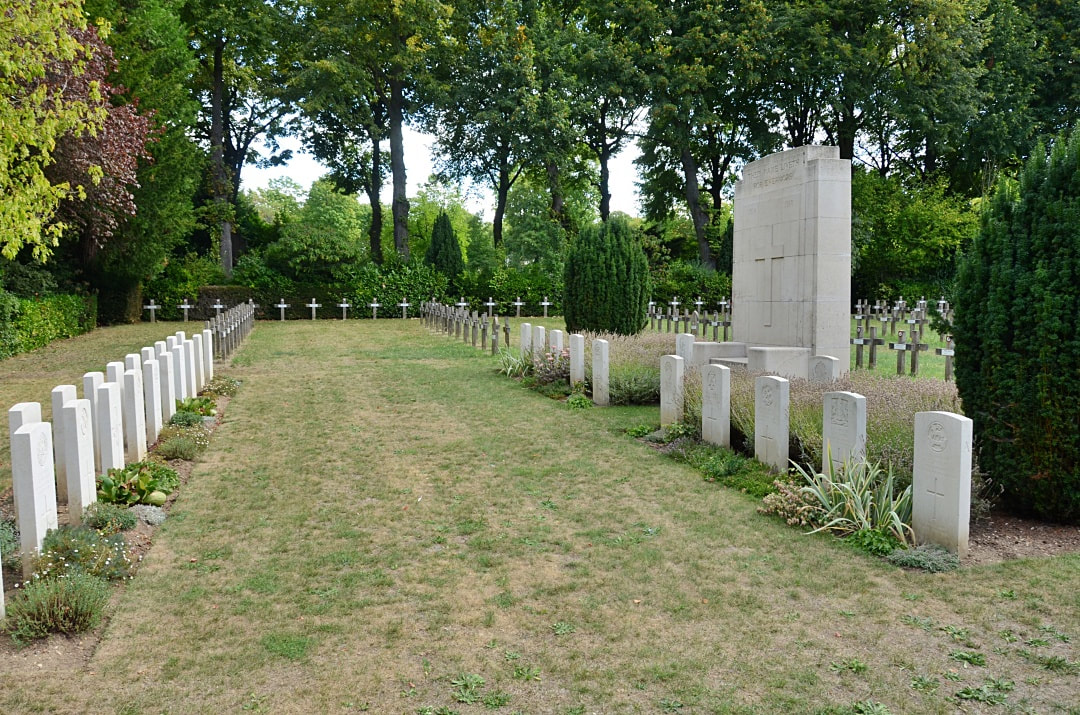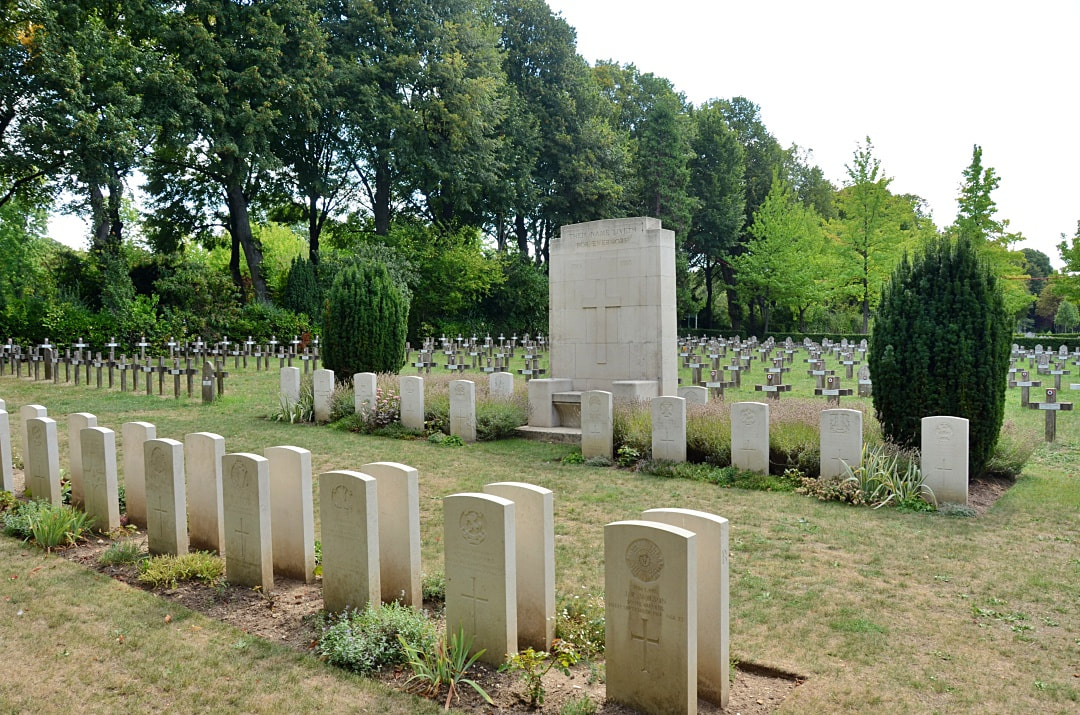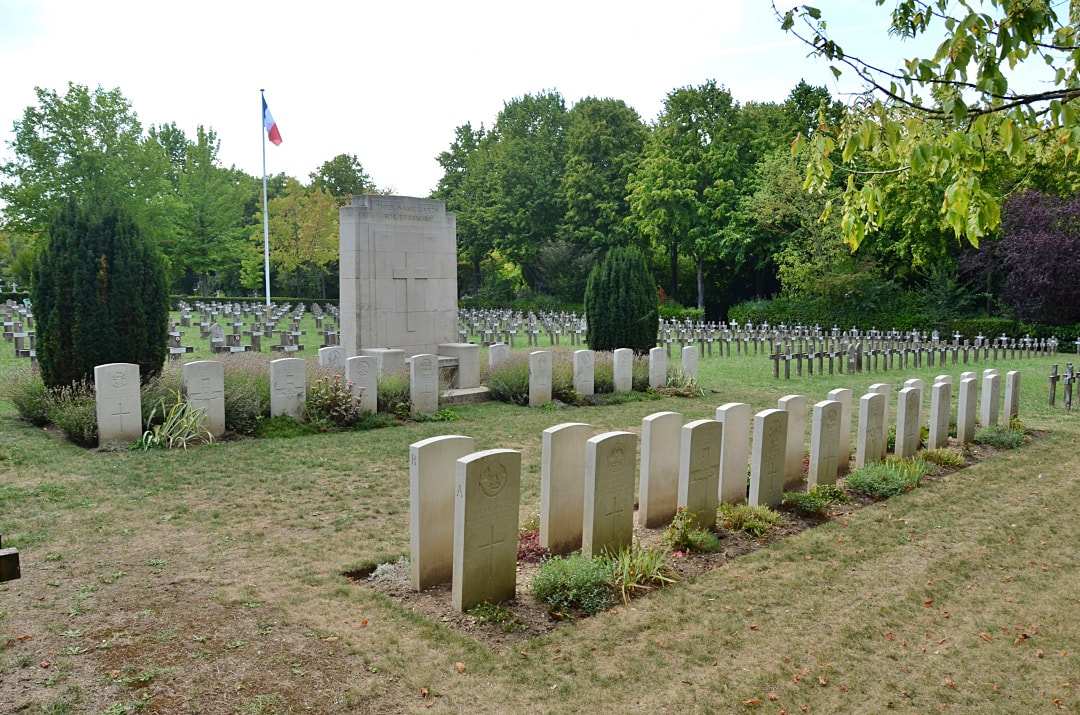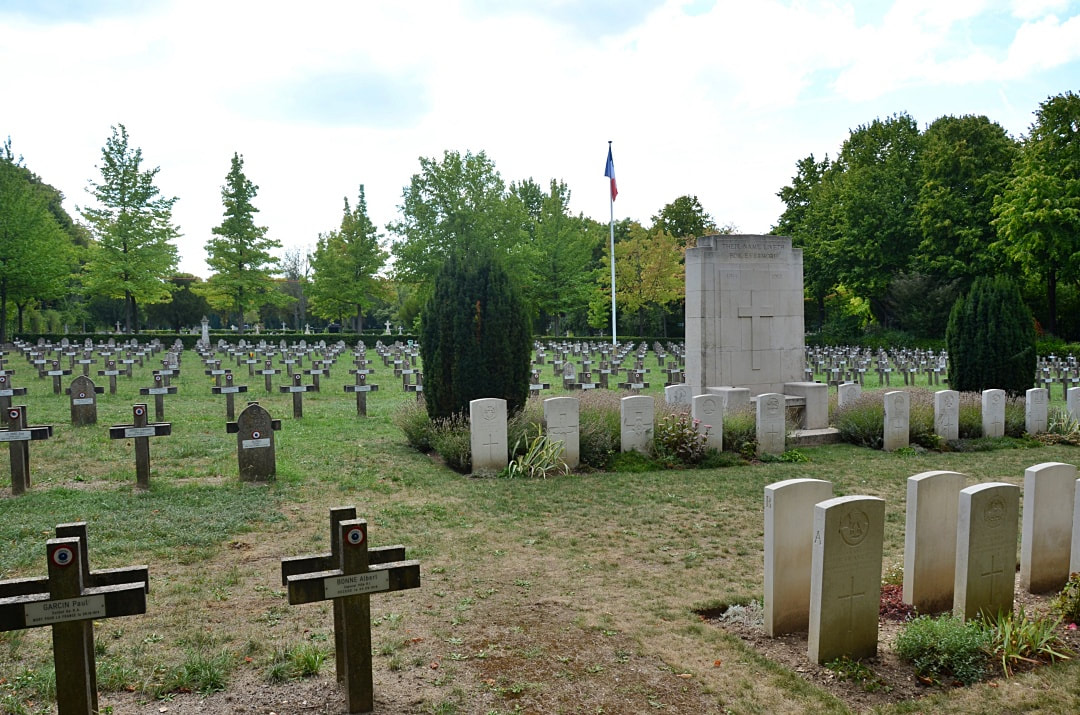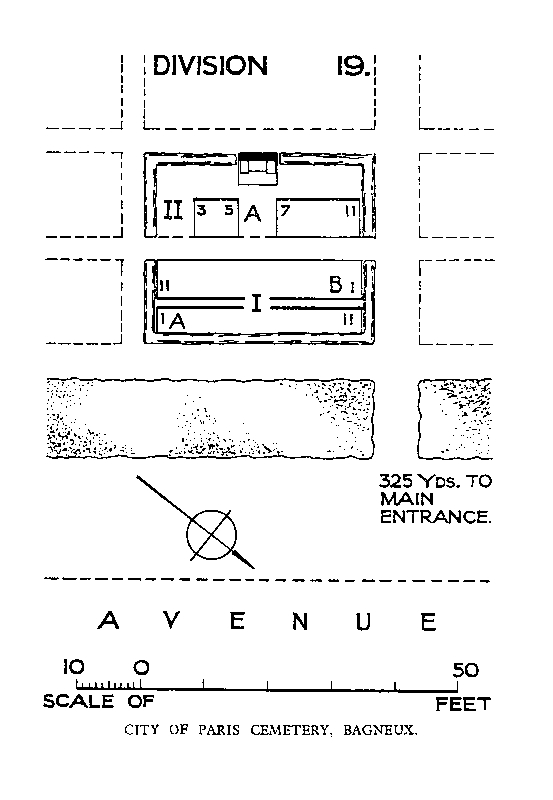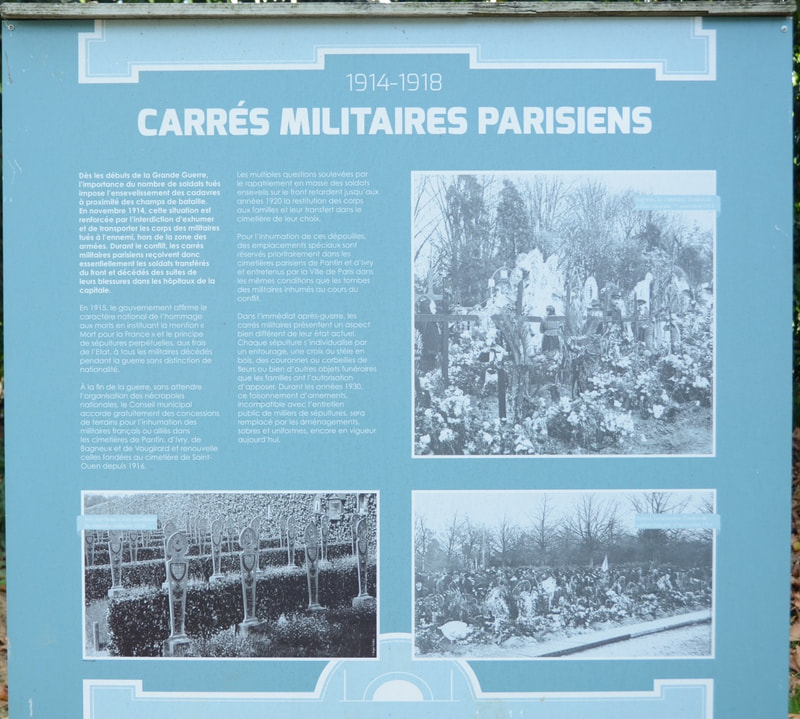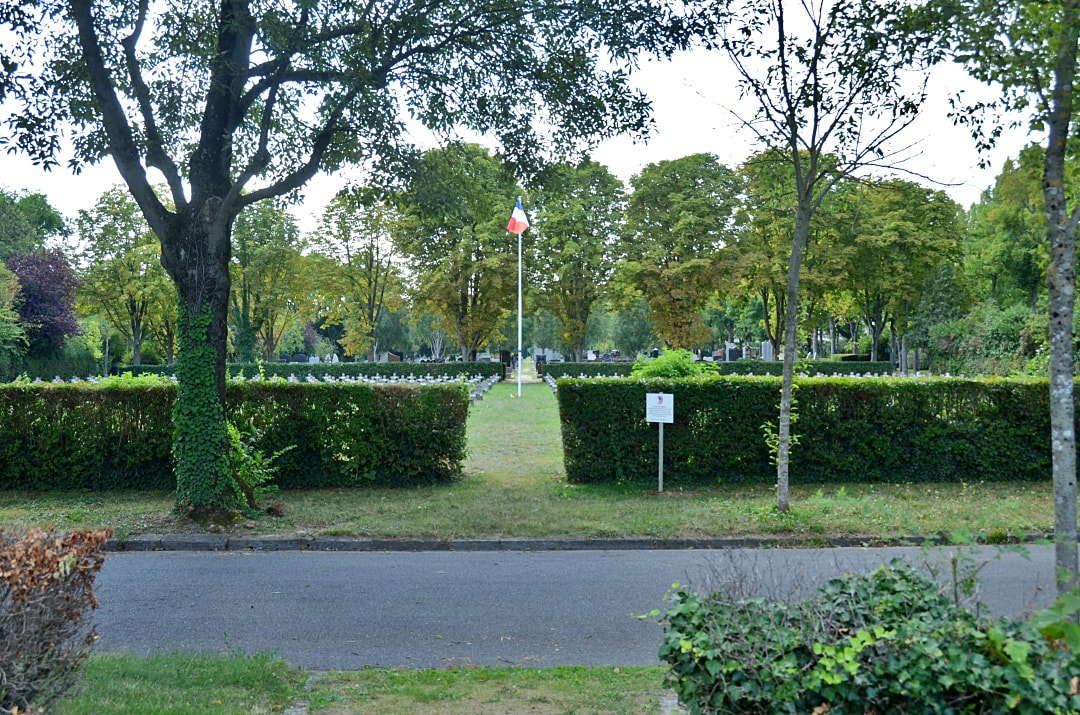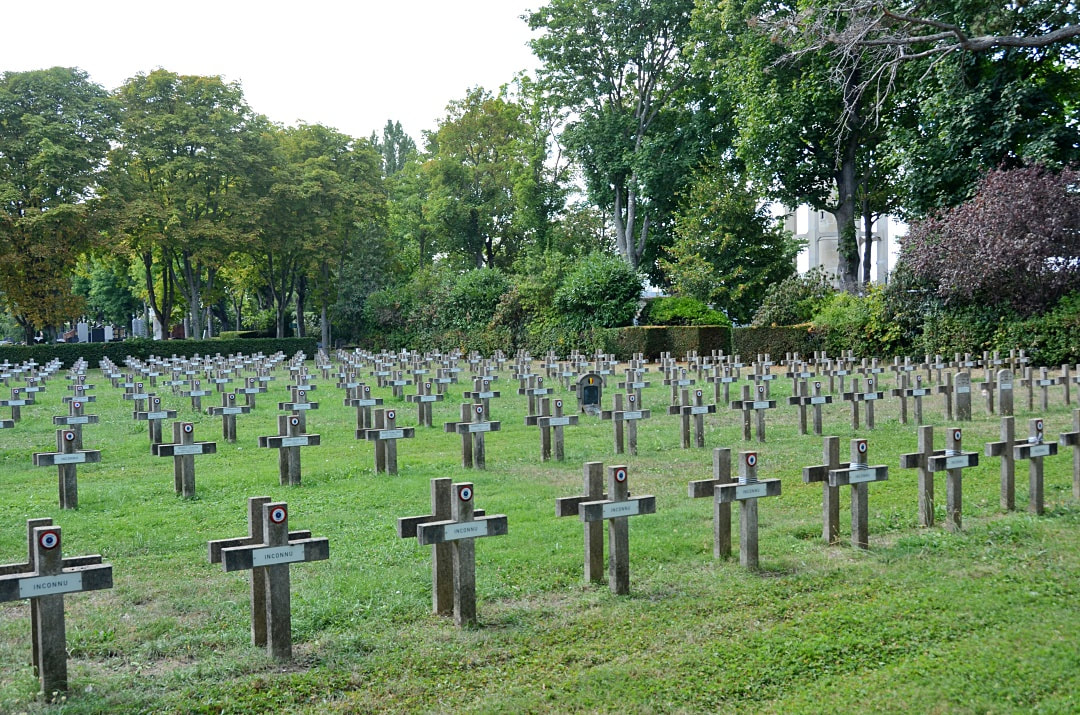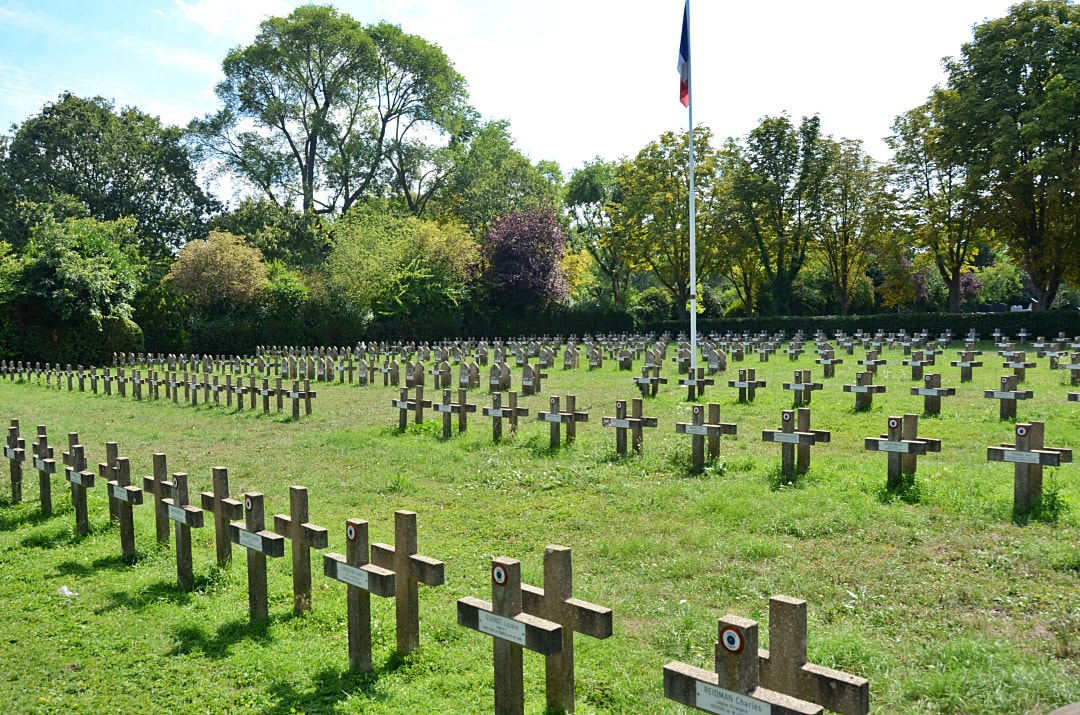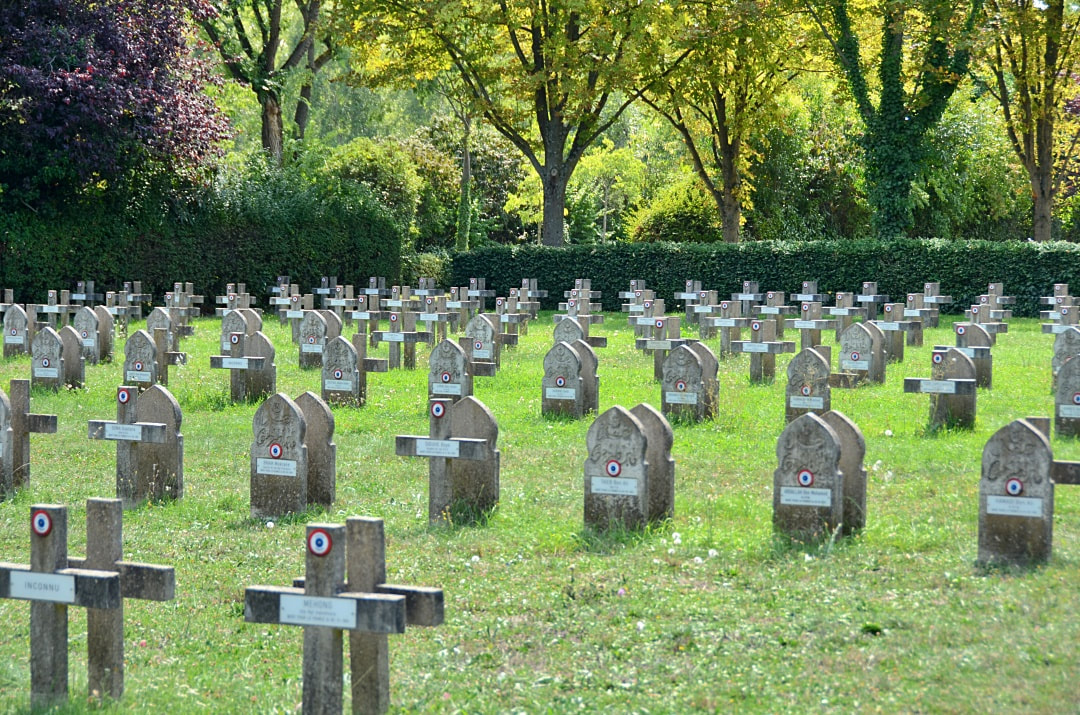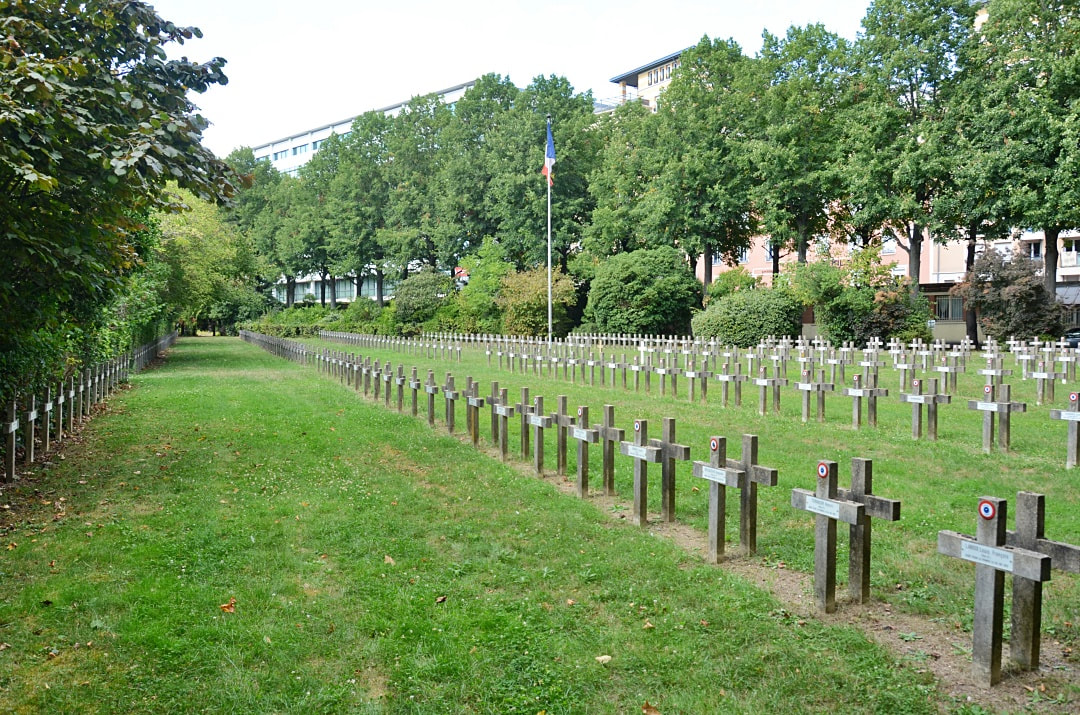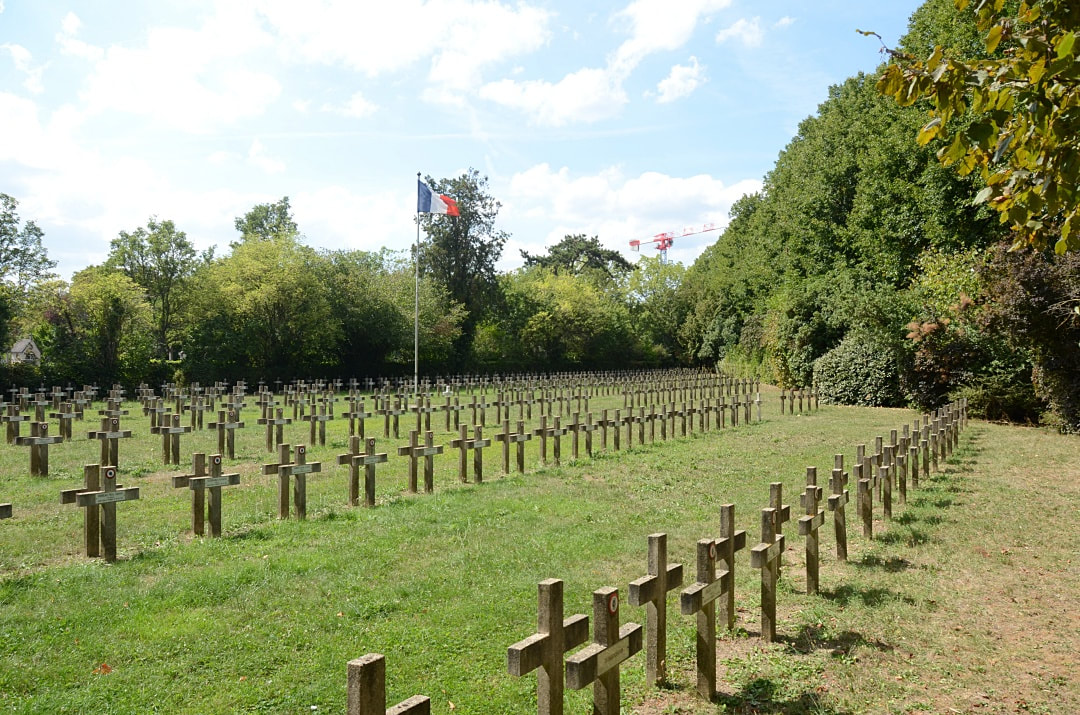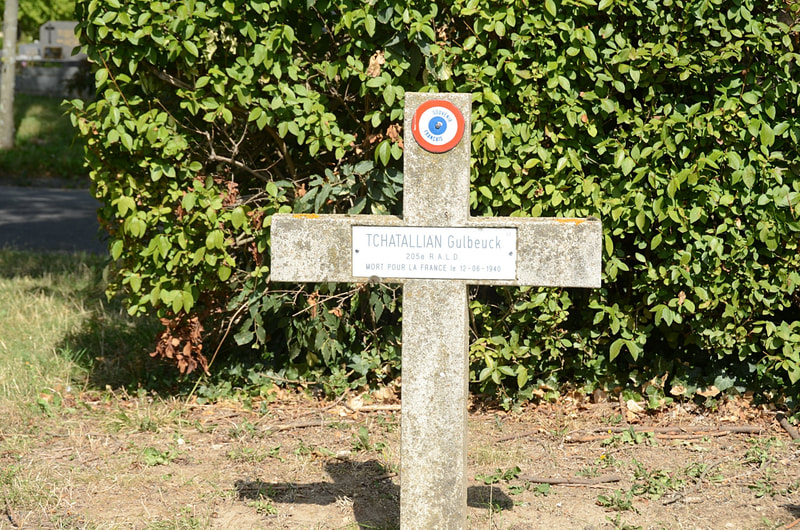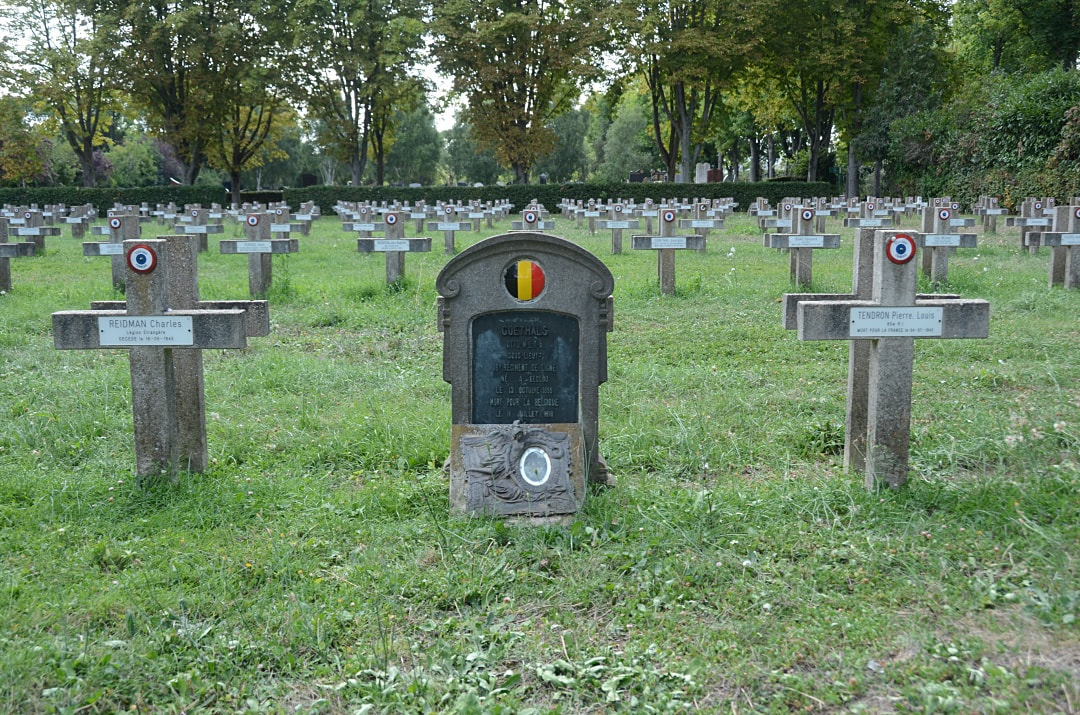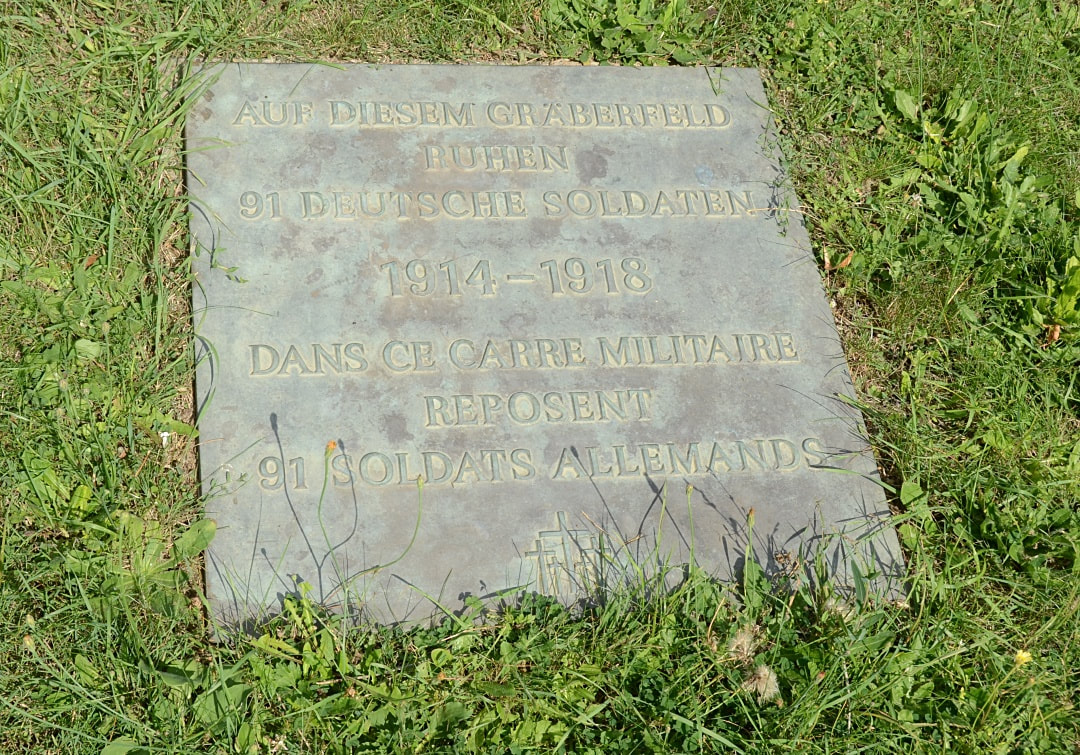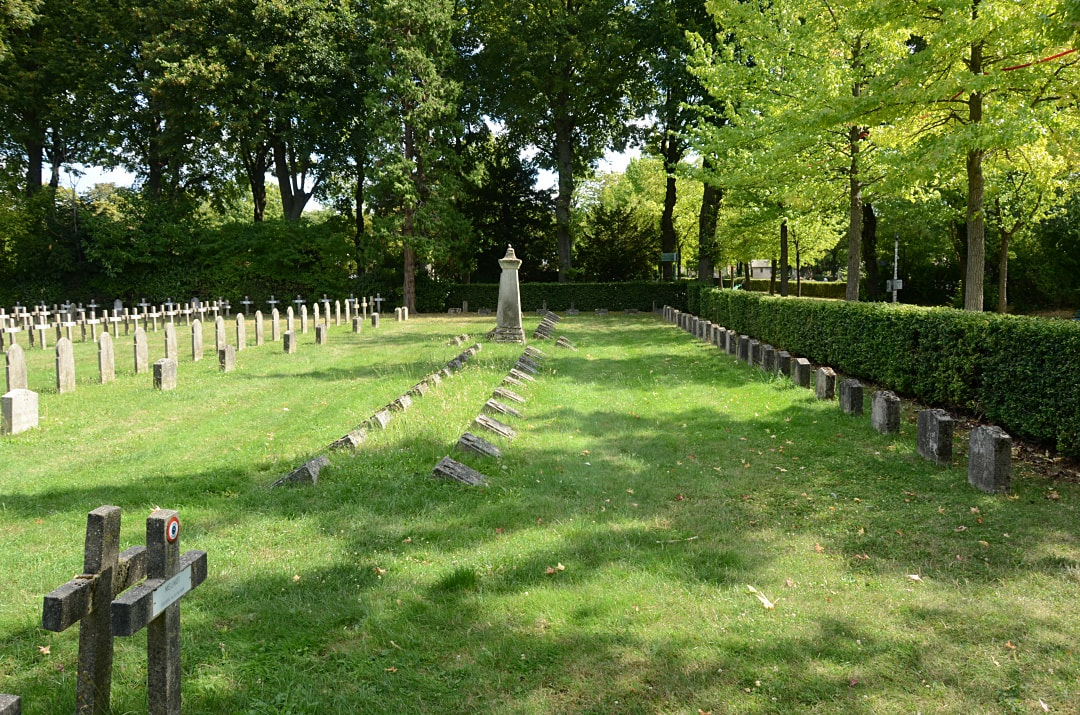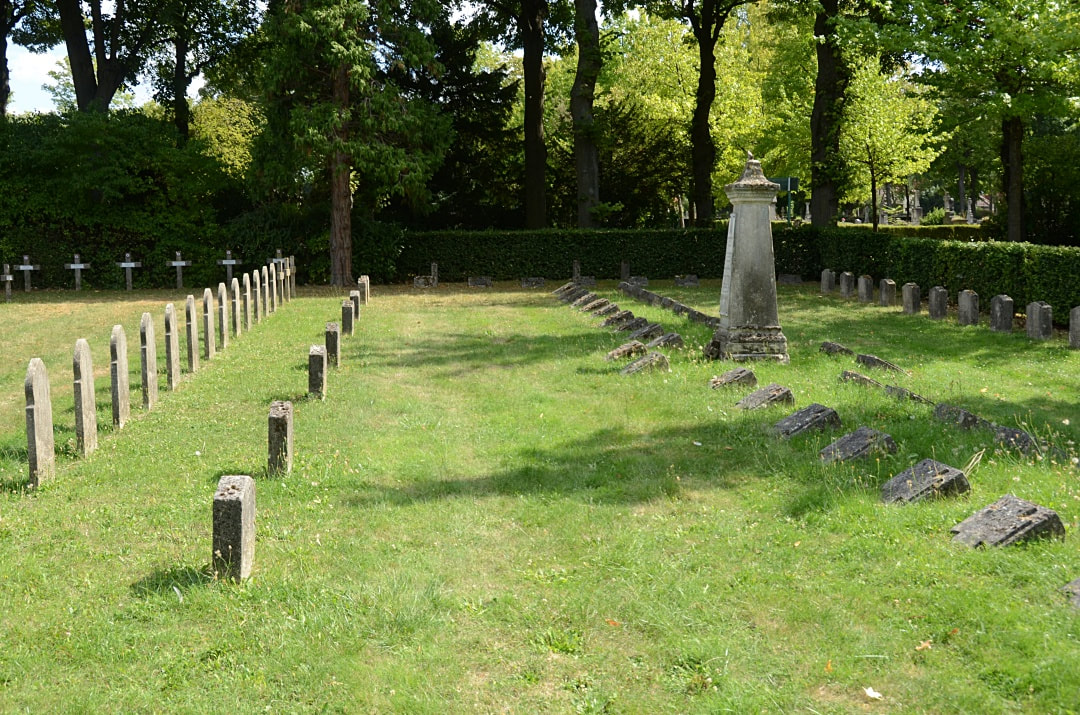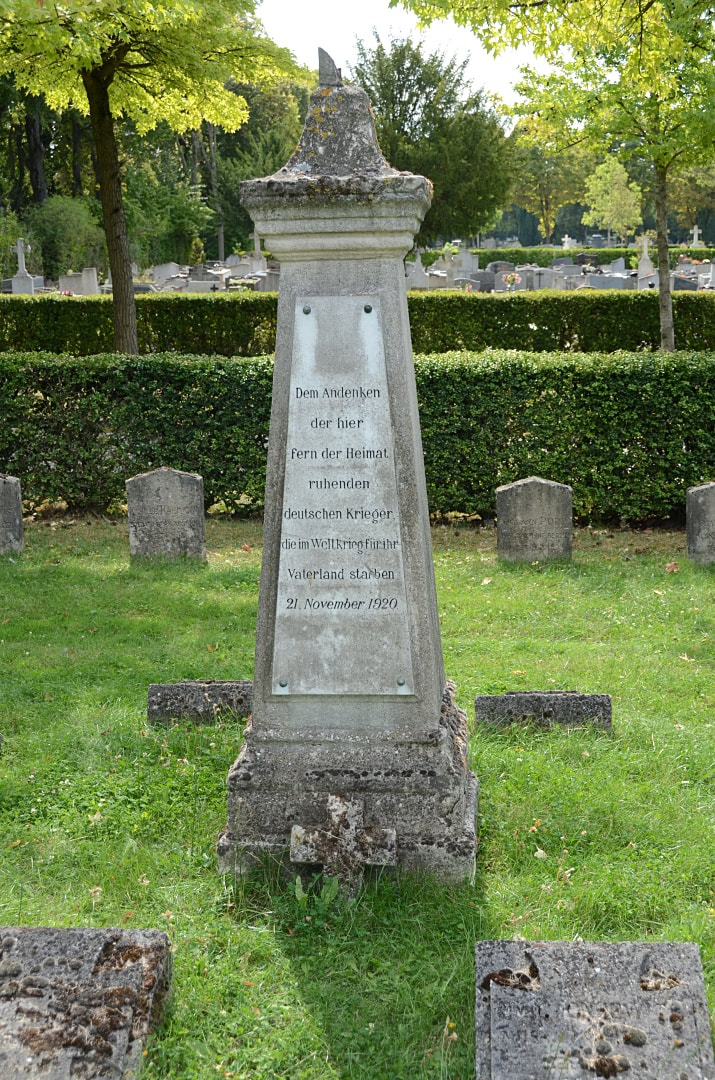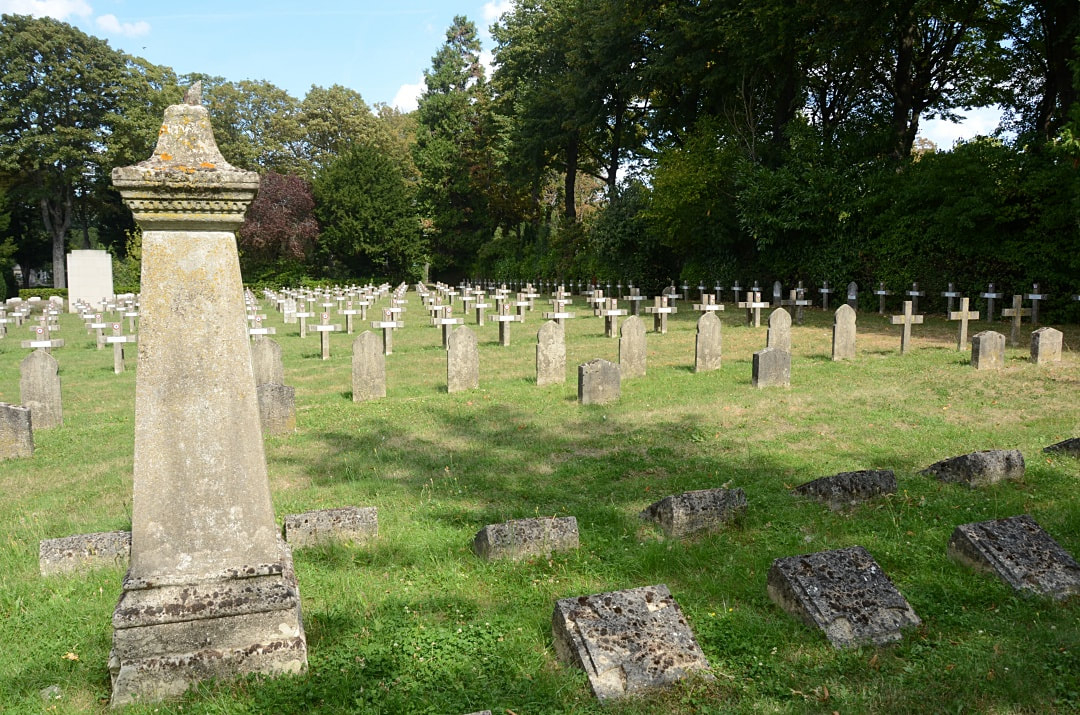CITY OF PARIS CEMETERY
Bagneux
Paris
Hauts-de-Seine
France
GPS Coordinates: Latitude: 48.81003, Longitude: 2.3123
Location Information
This is a large metropolitan cemetery to the south of the city in the suburb of Bagneux. From the railway station take the Avenue Mark Dormoy. Continue straight on until you reach the second set of traffic lights when the cemetery entrance will be found on the right. Near the east corner of the cemetery are two small Commonwealth plots.
Historical Information
The British War Graves in the neighbourhood of Paris fall into three main groups. The earliest are those of soldiers who died of wounds in French and British hospitals in or near Paris in 1914, when the ambulance trains ran South-Westward from the Aisne and the Marne. The second group is due to the presence of British troops in the Aisne and the Marne in the summer of 1918. The third is a number of graves of men who died after the Armistice.
In the 19th Division, near the East corner, are two small Commonwealth Plots.
There are 34, 1914-18 and and 1, 1939-45 war casualties commemorated in this site.
The plots cover an area of 133 square metres.
The commonwealth plot was designed by Arthur James Scott Hutton
Total Commonwealth Burials: 35.
World War One Identified Casualties: United Kingdom 32, Australia 1, South Africa 1. Total 34.
World War Two Identified Casualty: United Kingdom 1.
Shot at Dawn
20035 Private Frederick Johnson, 2nd Bn. Border Regiment executed for desertion on 1st August 1918. Special Memorial. Alternative Commemoration - buried in Vincennes New Communal Cemetery, Fontenay-Sous-Bois.
20037 Private Harry McClair, 2nd Bn. Border Regiment executed for desertion on 1st August 1918. Son of Sarah Ann Emmerson, of 56, Norfolk St., Wisbech, Cambs. Alternative Commemoration - buried in Vincennes New Communal Cemetery, Fontenay-Sous-Bois.
Frederick Johnson and Private McClair enlisted together, being posted to their battalion towards the end of 1915. At some unknown point, the pair absconded, to be arrested in the summer of 1918, having been absent for some considerable time, for their Division had been transferred to Italy at the end of 1917. They were playing football, when informed that execution was to be on the following day at Vincennes. There a French officer recorded inter alia that in the cells overnight they were ‘preached at by a huge padre of alcoholic appearance’ & that, for the purposes of execution, they were ‘tied up from head to toe like sausages’ with their faces thickly bandaged. (Putkowski, pp 250-251)
This is a large metropolitan cemetery to the south of the city in the suburb of Bagneux. From the railway station take the Avenue Mark Dormoy. Continue straight on until you reach the second set of traffic lights when the cemetery entrance will be found on the right. Near the east corner of the cemetery are two small Commonwealth plots.
Historical Information
The British War Graves in the neighbourhood of Paris fall into three main groups. The earliest are those of soldiers who died of wounds in French and British hospitals in or near Paris in 1914, when the ambulance trains ran South-Westward from the Aisne and the Marne. The second group is due to the presence of British troops in the Aisne and the Marne in the summer of 1918. The third is a number of graves of men who died after the Armistice.
In the 19th Division, near the East corner, are two small Commonwealth Plots.
There are 34, 1914-18 and and 1, 1939-45 war casualties commemorated in this site.
The plots cover an area of 133 square metres.
The commonwealth plot was designed by Arthur James Scott Hutton
Total Commonwealth Burials: 35.
World War One Identified Casualties: United Kingdom 32, Australia 1, South Africa 1. Total 34.
World War Two Identified Casualty: United Kingdom 1.
Shot at Dawn
20035 Private Frederick Johnson, 2nd Bn. Border Regiment executed for desertion on 1st August 1918. Special Memorial. Alternative Commemoration - buried in Vincennes New Communal Cemetery, Fontenay-Sous-Bois.
20037 Private Harry McClair, 2nd Bn. Border Regiment executed for desertion on 1st August 1918. Son of Sarah Ann Emmerson, of 56, Norfolk St., Wisbech, Cambs. Alternative Commemoration - buried in Vincennes New Communal Cemetery, Fontenay-Sous-Bois.
Frederick Johnson and Private McClair enlisted together, being posted to their battalion towards the end of 1915. At some unknown point, the pair absconded, to be arrested in the summer of 1918, having been absent for some considerable time, for their Division had been transferred to Italy at the end of 1917. They were playing football, when informed that execution was to be on the following day at Vincennes. There a French officer recorded inter alia that in the cells overnight they were ‘preached at by a huge padre of alcoholic appearance’ & that, for the purposes of execution, they were ‘tied up from head to toe like sausages’ with their faces thickly bandaged. (Putkowski, pp 250-251)
Entrance and Commonwealth War Graves
Images © Johan Pauwels

26152 Driver
Robert Henry Gillings
22nd Battery, Royal Field Artillery
24th September 1914, aged 29.
19. I. A. 3.
Son of William and Mary Gillings; husband of Mabel Gillings, of 32, Amberly St., Stapleton Rd., Bristol. Born at Bury, Lancs.
His headstone bears the inscription "Not My Will O God But Thy Will Be Done"
Robert Henry Gillings
22nd Battery, Royal Field Artillery
24th September 1914, aged 29.
19. I. A. 3.
Son of William and Mary Gillings; husband of Mabel Gillings, of 32, Amberly St., Stapleton Rd., Bristol. Born at Bury, Lancs.
His headstone bears the inscription "Not My Will O God But Thy Will Be Done"
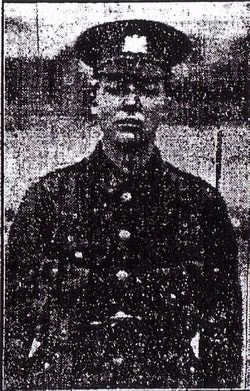
10517 Private
James Nyland
1st Bn. King's Own (Royal Lancaster Regiment)
4th October 1914, aged 19.
19. II. A. 5.
Son of James and Hannah Mary Nyland, of 28, Bloom St., Oldham.
James Nyland
1st Bn. King's Own (Royal Lancaster Regiment)
4th October 1914, aged 19.
19. II. A. 5.
Son of James and Hannah Mary Nyland, of 28, Bloom St., Oldham.
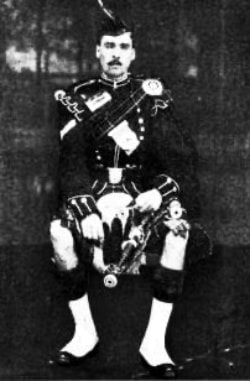
3707 Lance Sergeant
Samuel Alexander Richardson
1st Bn. Scots Guards
20th September 1914, aged 34.
19. I. A. 7.
Son of William and Jane Richardson; husband of Alice Gladys Richardson, of 12, Haverlock St., Chalk Farm, London. Born at Berwick.
His headstone bears the inscription "Thy Will Be Done"
Samuel Alexander Richardson
1st Bn. Scots Guards
20th September 1914, aged 34.
19. I. A. 7.
Son of William and Jane Richardson; husband of Alice Gladys Richardson, of 12, Haverlock St., Chalk Farm, London. Born at Berwick.
His headstone bears the inscription "Thy Will Be Done"

7465 Private
John Hunter Smith
1st Bn. Black Watch (Royal Highlanders)
24th September 1914, aged 36.
19. I. B. 9.
Husband of May Houston (formerly Smith), of 119, Gorgie Rd., Edinburgh.
John Hunter Smith
1st Bn. Black Watch (Royal Highlanders)
24th September 1914, aged 36.
19. I. B. 9.
Husband of May Houston (formerly Smith), of 119, Gorgie Rd., Edinburgh.

